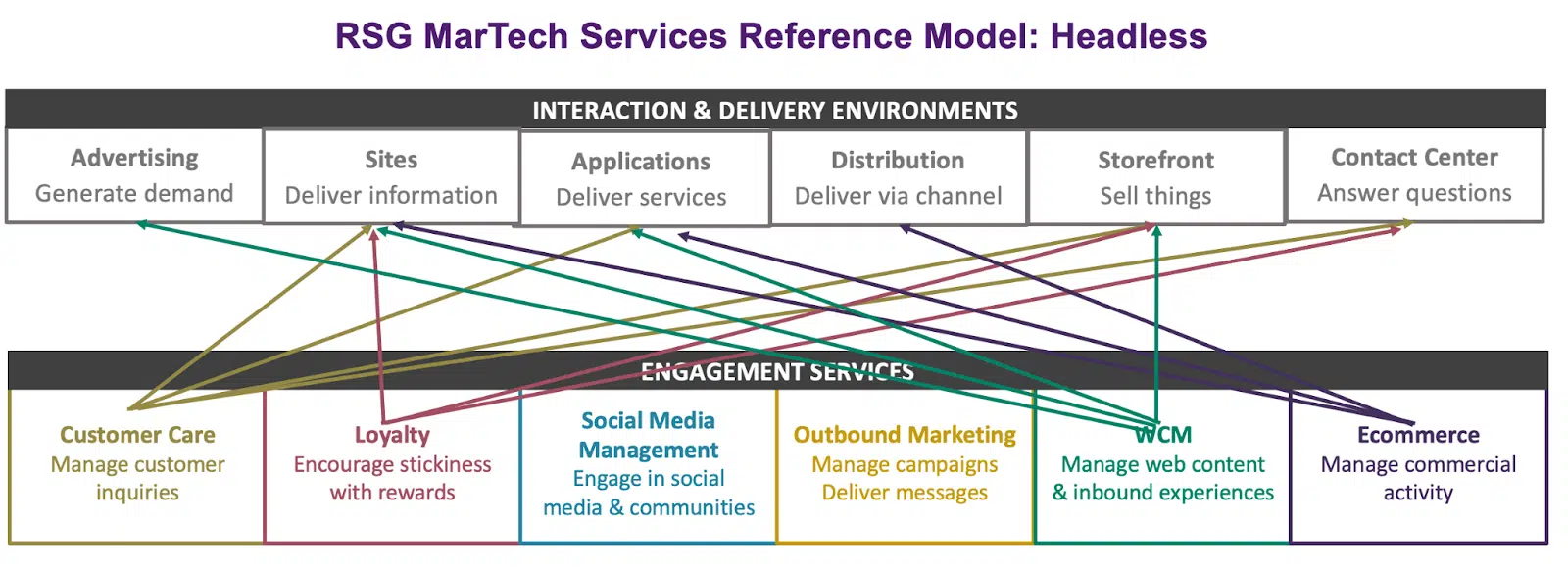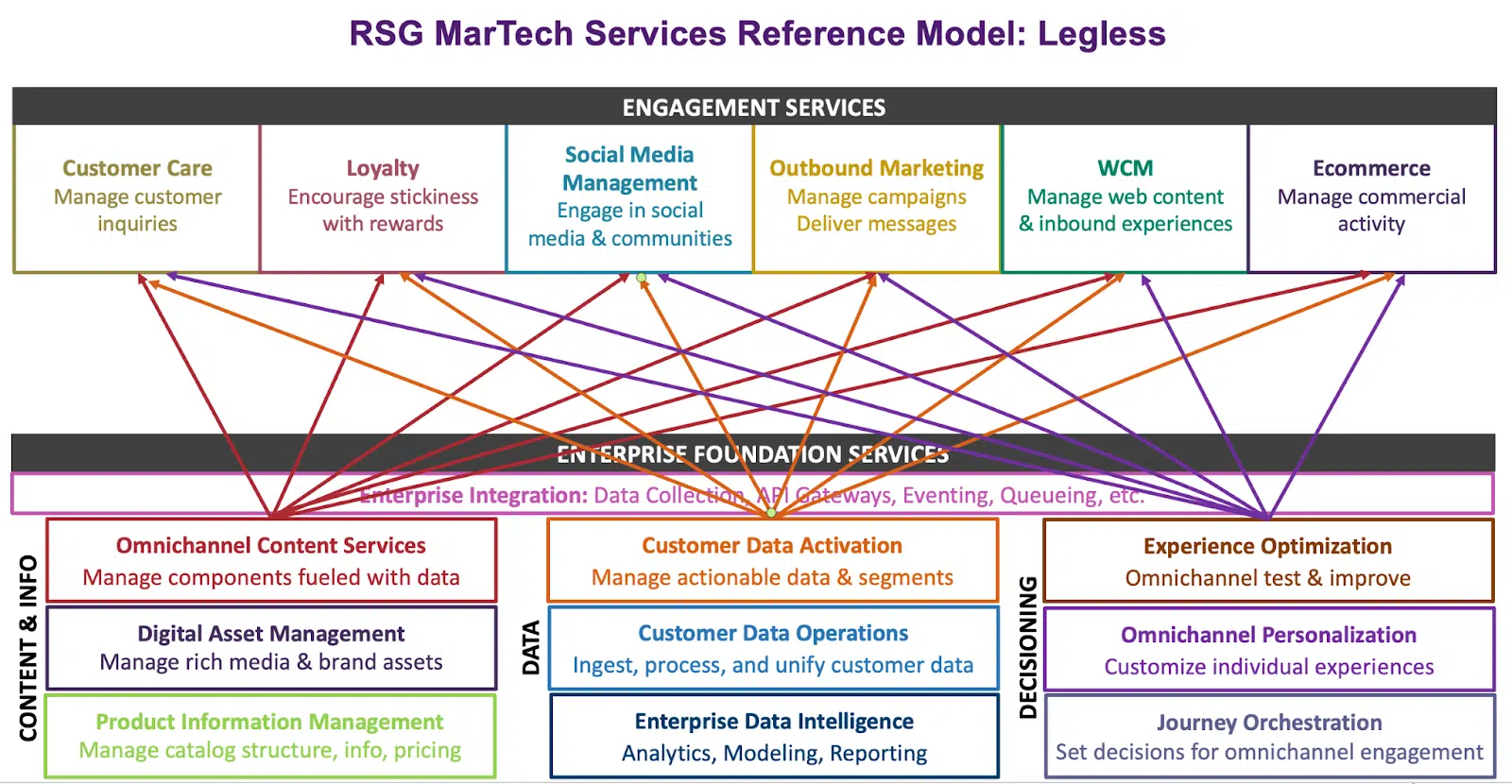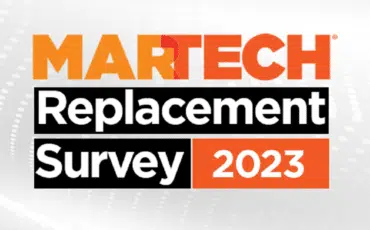I just lately taught some martech workshops (in particular person!) and obtained quite a few fascinating questions from stack leaders. Clearly, 2023 represents one other 12 months of nice change as omnichannel aspirations tackle greater precedence and leaders proceed to revisit their platform selections amid rising hype round synthetic intelligence and machine studying.
Right here’s my tackle three clusters of questions and subjects that arose:
- CDP packages as stalking horses for buyer knowledge modernization.
- Rethinking your engagement tier.
- Adtech-martech integration.
Every matter has its personal worth and a few circumstances, urgency. However collectively, the solutions mirror a broader reset occurring throughout enterprise martech stacks.
1. CDP as stalking horse
Over the previous 12 months, we’ve suggested a number of massive enterprises in CDP know-how picks. We noticed nice range in enterprise wants and maturity (and thankfully, a variety of vendor choices to fulfill these), plus some widespread questions which I’ve additionally fielded at current conferences and webinars.
- How can we inform if we’re prepared for this?
- What do we’d like operationally to succeed?
- What’s the possible timeframe for monetary payback?
And so forth…
I’ve come to conclude that CDP know-how initiatives steadily change into “stalking horses” for the broader want for buyer knowledge ecosystem modernization and may subsequently be handled as such. After all, this feels backward. Shouldn’t we get our enterprise act collectively earlier than we choose any new know-how? That’s a rational take.
But, we additionally see the utility in working parallel tracks over the 12 to 16 months it takes to pick out and burn in a CDP, whereby one workgroup works on the know-how and the opposite workgroup labors to get knowledge sources, high quality, pipes and governance overhauled.
Traditionally, we’ve seen this phenomenon earlier than the place a company leveraged a platform implementation to drive key enterprise change. Think about:
- Early net content material administration system implementations forcing a consolidation of digital methods.
- Digital asset administration platforms compelling main enterprise asset clean-ups.
- Ecommerce platform pilots driving key standardizations round digital industrial ops and customer-focused UX design.
However, any enterprise taking a look at CDPs or just lately licensing such a platform might want to spend much more sources getting their broader buyer knowledge toolset to cohere right into a rational ecosystem. This work will get measured in years. It additionally means paying shut consideration to architectural match amid a CDP market with an unusually huge set of potential capabilities. Certainly, usually one-third of CDP choice tasks we see at RSG are substitute efforts, the place the enterprise rushed right into a poor-fitting selection the primary time.
Finally, my recommendation boils all the way down to not having a “CDP challenge” in any respect — relatively a buyer knowledge modernization (or “transformation” in case you should) program that occurs to incorporate a CDP initiative.
2. Rethinking your engagement tier
The opposite questions I are likely to obtain revolve round long-standing investments that martech leaders have made on the engagement providers tier. See the multi-colored single center band within the chart beneath.

Usually, the enterprise had been working with these platforms for a very long time— had beefed up the groups managing them and invested in difficult modifications. And but… questions come up.
Our WCM/CRM/social/ecommerce/and many others. platform is getting lengthy within the tooth and it takes extra time to do easy issues; is that ordinary?
Why is it so exhausting to combine with all the opposite platforms on the similar tier? E.g., e-mail touchpoints with web site personalization and commerce suggestions?
Why can’t the platform merely inherit content material, knowledge and instructions from enterprise-wide platforms, relatively than doing every part itself? I’m copying a bunch of knowledge and information round; once more, is that this regular?
I received’t name this wave of concern a tsunami but. However I sense rising disaffection at this tier. Architecturally, many enterprises have put power into making engagement platforms “headless.” That’s a helpful approach to decouple key providers from precise supply environments.

This development already challenges martech leaders as a result of most engagement platforms had been by no means designed to run headlessly, resulting in crude workarounds or substitute plans.
But, the approaching omnichannel decade will drive an much more important architectural innovation: legless.

Legless strikes key content material, knowledge and decisioning providers decrease in your stack, explicitly enabling them to be shared throughout channels, enabling omnichannel deployment whereas decreasing integration complexity alongside the way in which.
For certain, most enterprises haven’t arrived right here but, however many are shifting on this route. And as soon as once more, it’s creating stress amongst extra conventional engagement platform distributors, whose programs are used to serving as heavyweight environments versus extra agile, lighter, pass-through areas. That disgruntlement amongst martech leaders I discussed earlier will result in much more replacements over the subsequent few years on the engagement tier.
Within the meantime, the place to seat AI / ML? Distributors inside each block in these diagrams will boast about their new capabilities on this space, and plenty of hallway conversations — full of pleasure and trepidation alike — revolve round the place and how you can use these capabilities. For a very long time, AI and ML comprised a function. However as use circumstances and potentialities have grown considerably in current quarters, you’ll need to begin fascinated by them as a layer in your stack.
In different phrases, that growing older WCM platform isn’t going to change into any sprier by way of the seller injecting some random studying algorithm into it. Identical for ecommerce, social and every part else. Enterprises that care about transparency and accountability will need to develop their very own decoupled AI/ML capabilities on the basis layer and prolong them throughout the stack.
3. Discovering actual worth in adtech-martech integration
The opposite sizzling matter amongst martech leaders bending my ear has been adtech–martech stack integration. On the floor, each stacks are likely to resemble one another by way of assembling content material and utilizing knowledge to ship it off to a selected interplay atmosphere, usually in line with some particular logic.
But, adtech and martech stacks have tended to evolve independently, with enterprises usually licensing separate instruments that do very related issues. However with the rise of basis providers (like CDPs) and the challenges of knowledge deprecation martech and adtech leaders are taking a contemporary take a look at nearer integration to reply some key questions like:
- Shouldn’t our analytics and attribution fashions cowl the total spectrum of a buyer journey by way of each paid and owned+operated channels?
- How can we higher leverage first-party knowledge to enhance our return on advert spend?
- How will we navigate the shoals of context- and channel-based consent?
- How can we automate the combination of paid media and owned-channel touchpoints in always-on campaigns?
Ahead-thinking leaders are asking much more questions, so there’s no lack of use circumstances right here. I sense specific enthusiasm round methods that might create extra environment friendly spend in all channels, notably paid media.
That is partly a technical problem, however for many enterprises we work with, it’s much more of a governance and organizational problem to work out. For a few of you, that’s excellent news! You could not at all times be capable to change your know-how base, however hopefully, you can remodel how your enterprise groups work collectively.
Remaining ideas
When you, too, end up asking questions much like these posed above, know that you simply’re not alone. There’s a low-key reset transpiring throughout a number of enterprise stacks. My recommendation is to create an intentional technique round it and never recoil from making powerful selections about legacy platforms, together with these from “identify” distributors.
Get MarTech! Every day. Free. In your inbox.

Opinions expressed on this article are these of the visitor creator and never essentially MarTech. Workers authors are listed right here.

